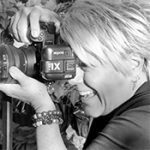Intro by Skip Cohen
We don’t share a lot of technique talk here on the Marathon blog, but with life so different coming out of the pandemic, here’s an area that is so needed right now – help in your quest for creativity.
Digging back through the archives of Successful-Photographer, Bob Coates’ blog, I loved this one about looking for the shadows. It seems like a perfect reminder of the critical ingredients every artist needs to create incredible portraits. And, while some of you will roll your eyes and feel this is just too basic for your skillset, over the last few months, I’m talked with dozens of photographers caught in “analysis paralysis.”
The stress of trying to get their business back on track has stifled their creativity. So, while this is a back-to-basics kind of post today, it’s so essential for everyone not to lose sight of the power of your skillset. To the public, you’re all magicians who stop time and turn intangible memories into tangible photographs people can hold for a lifetime.
By Bob Coates
In photography, you will often hear people exhorting you to ‘Look for the Light’! I don’t know how many times I heard and read that during my learning process over the years. I believe that my photography leaped forward when I first heard ‘Look for the Shadows.’ When I started looking for and shooting into, the shadows I saw a marked difference in the depth and dimension of my photographs.
Look for the shadows has become my watchword. Shadows are what make or break an image. If you are walking along and you see harsh shadows being cast by the trees and shrubs and you decide to put your subject in that same light, you will get harsh shadows. Seeing little pockets of soft shadows and using these areas will make for less contrast in your images. To me, soft shadow edge transitions lend beauty and form to a subject being placed on a two-dimensional surface that you want to read as three dimensions.
That being said I am always watching how the light and shadows interact which brings me to today’s post. We were out to dinner at my wife’s favorite restaurant J Wine Bistro in the VOC Sedona, AZ. I noticed the waiter Ray and saw the split light on his face from the light beside the front door of the restaurant. I asked Ray when he had a moment if he would strike a quick pose for me.
Ray with split light.
While I enjoyed the light shaping Ray’s face, I wasn’t thrilled with the background as you might imagine. So let’s play! I extracted Ray from the environment and went to work.
After extraction and some added texture and background.
A slight change in layer positioning adds a whole new color palette and feel to the image
Last I thought I’d see how Ray liked being in Italy.
The original image was captured from what I call the professional photographer’s point and shoot. It’s the Lumix LX100. The LX100 is a nice handy camera that can fit in a large pocket. It has a fixed lens with fast f1.7-2.8 Leica glass and a decent zoom range of 24-72mm.




















